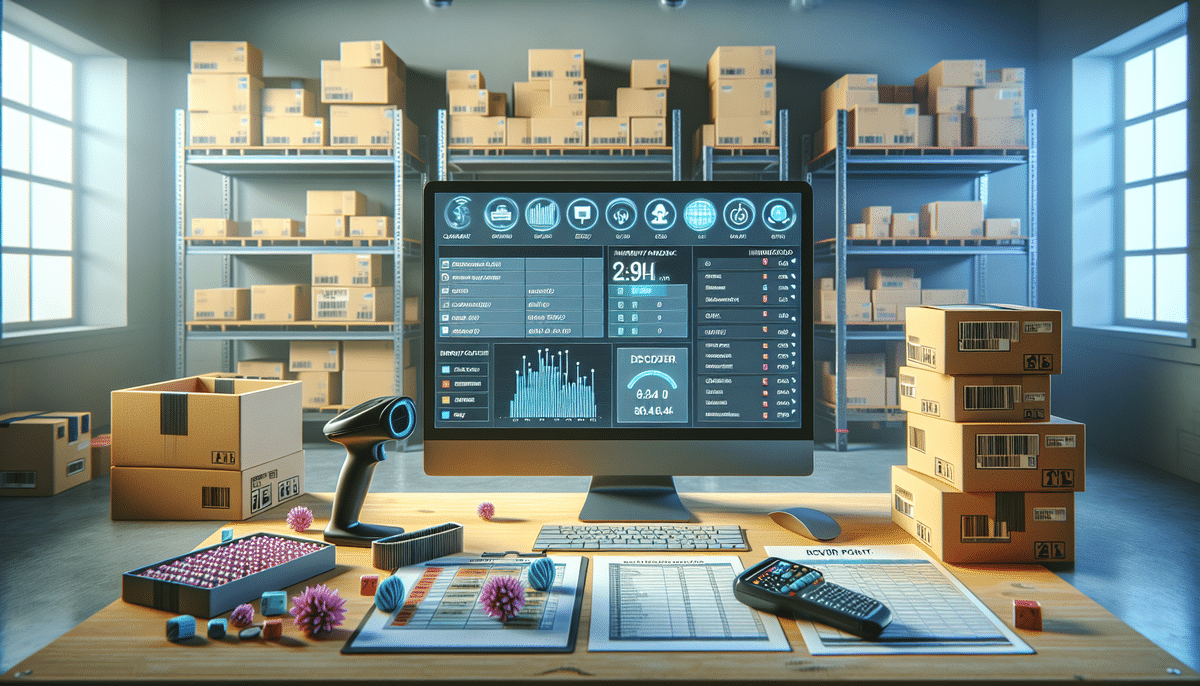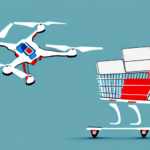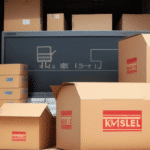How to Effectively Manage Your Shopify Inventory
If you own a Shopify store, inventory management should be a top priority. Without effective inventory management, you risk overselling, understocking, and other issues that can lead to unhappy customers and lost sales. In this article, we will cover everything you need to know about managing your Shopify inventory, from understanding the types of inventory to automating the process with apps and tools.
Why Inventory Management is Crucial for Your Shopify Store
One of the biggest reasons why inventory management is crucial is that it allows you to maintain the right level of inventory. When you have too much inventory, you risk overstocking and tying up your capital in unsold products. On the other hand, when you have too little inventory, you may not be able to fulfill orders and keep your customers satisfied.
Effective inventory management also helps you avoid stockouts, which can damage your store's reputation and lead to lost sales. By tracking your inventory levels and sales data, you can identify trends and adjust your inventory levels accordingly. This allows you to maximize your sales and revenue while minimizing the risk of stockouts.
In addition to maintaining the right level of inventory and avoiding stockouts, effective inventory management can also help you reduce costs. By tracking your inventory levels and sales data, you can identify slow-moving products and make informed decisions about whether to discount or discontinue them. This can help you free up space in your warehouse and reduce the amount of capital tied up in unsold products. Additionally, by optimizing your inventory levels, you can reduce the amount of money you spend on storage and handling fees.
Understanding the Different Types of Inventory in Shopify
Before you can effectively manage your Shopify inventory, you need to understand the different types of inventory. There are three main types:
- Stocked products: These are the primary products that you sell in your store, and they are held in your inventory until they are sold.
- Unstocked products: These are products that you don't hold in inventory, like digital products or services.
- Non-stocked products: These are products that you don't typically sell, but you may use them in your store, like packaging materials or samples.
Understanding these different types of inventory is important because it affects how you track and manage your inventory levels.
It's also important to note that Shopify allows you to track inventory levels for each product variant. This means that if you sell a product in multiple colors or sizes, you can track the inventory levels for each variant separately.
Another feature of Shopify's inventory management system is the ability to set up alerts for low inventory levels. This can help you stay on top of your inventory and avoid stockouts, which can lead to lost sales and unhappy customers.
How to Set Up and Organize Your Shopify Inventory System
The first step in effective inventory management is to set up and organize your Shopify inventory system. This involves:
- Creating product variants
- Setting up stock levels
- Organizing your products in collections or categories
You should also consider using SKUs (Stock Keeping Units) to track your inventory. SKUs are unique codes that you assign to each product and variant, and they help you keep track of your inventory levels more accurately.
Another important aspect of setting up your Shopify inventory system is to establish reorder points. Reorder points are the minimum stock levels that trigger a reorder of a particular product. By setting up reorder points, you can ensure that you never run out of stock and avoid losing sales due to stockouts.
It's also a good idea to regularly review your inventory reports to identify slow-moving products or products that are out of stock frequently. This can help you make informed decisions about which products to reorder, which products to discount, and which products to remove from your inventory altogether.
Best Practices for Tracking and Monitoring Your Shopify Inventory Levels
Now that you've set up your inventory system, it's important to track and monitor your inventory levels regularly. This involves:
- Reviewing your stock levels
- Analyzing sales data
- Monitoring relevant metrics to identify trends
You should also consider setting up email alerts or notifications for low stock levels, so you can reorder products before they run out. This helps you avoid stockouts and ensures that you always have enough inventory to meet demand.
Another important aspect of inventory tracking is to regularly conduct physical inventory counts. This involves physically counting the number of products you have in stock and comparing it to your inventory records. This helps you identify any discrepancies and take corrective action to ensure accurate inventory levels.
Additionally, it's important to regularly review your inventory management processes and make adjustments as needed. This includes evaluating your reorder points, safety stock levels, and lead times to ensure they are optimized for your business needs and goals.
Tips for Forecasting Demand and Reordering Products in Shopify
To effectively manage your inventory, you need to be able to forecast demand and reorder products in a timely manner. This involves:
- Reviewing your sales data
- Identifying trends
- Predicting future demand
You should also consider using tools like ABC analysis to prioritize your inventory and focus on the products that generate the most revenue. By forecasting demand and prioritizing your inventory, you can avoid tying up your capital in slow-moving products and maximize your sales.
Another important factor to consider when forecasting demand is seasonality. Certain products may sell better during specific times of the year, such as winter coats in the colder months or swimsuits in the summer. By analyzing your sales data from previous years, you can anticipate these seasonal trends and adjust your inventory accordingly.
In addition, it's important to stay up-to-date with industry trends and changes in consumer behavior. For example, if there is a sudden increase in demand for eco-friendly products, you may need to adjust your inventory to meet this new demand. Keeping a close eye on market trends and consumer behavior can help you stay ahead of the competition and ensure that your inventory is always in demand.
Automating Your Inventory Management with Shopify Apps and Tools
If you want to streamline your inventory management process, consider using Shopify apps and tools to automate certain tasks. There are many apps available that can help you:
- Track your inventory
- Create purchase orders
- Manage your stock levels automatically
You should also consider integrating your Shopify store with other platforms, such as your accounting software or your suppliers' inventory systems. This helps you manage your inventory more efficiently and reduces the risk of errors or discrepancies.
Managing Product Variants and Options in Your Shopify Inventory
If you sell products with multiple variants or options (like size or color), it's important to manage these effectively in your inventory system. This involves:
- Creating product variants
- Setting up stock levels for each variant
- Organizing your products in collections or categories
You should also consider using apps or tools that can help you manage your product variants more easily. For example, there are apps that can automatically update your stock levels based on changes to your product variants, or allow you to create bulk variants quickly and easily.
Dealing with Out-of-Stock Products on Shopify
Despite your best efforts, there may be times when you run out of stock on certain products. When this happens, it's important to:
- Communicate with your customers and let them know when the product will be back in stock.
- Use tools like backorders or pre-orders to allow customers to reserve the product and be notified when it becomes available.
This helps you avoid losing potential sales and keeps your customers engaged and satisfied.
Using Analytics to Optimize Your Shopify Inventory Performance
To continuously improve your inventory management, it's important to use analytics to track your performance and identify areas for improvement. This involves:
- Reviewing your sales data
- Analyzing inventory metrics
- Identifying trends to make informed decisions
You should also consider using A/B testing to experiment with different inventory strategies and see which ones work best for your store. By using analytics and testing, you can optimize your inventory performance and maximize your sales.
Avoiding Common Mistakes When Managing Your Shopify Inventory
Finally, it's important to be aware of common mistakes that can arise when managing your Shopify inventory. Some of the most common mistakes include:
- Overstocking
- Understocking
- Failing to track your inventory accurately
- Not prioritizing your inventory effectively
By being aware of these mistakes and taking steps to avoid them, you can ensure that your inventory management is effective and efficient.
How to Handle Returns and Refunds in Your Shopify Inventory System
When a customer requests a return or refund, it's important to handle this process effectively in your inventory system. This involves:
- Updating your stock levels
- Tracking any returns or exchanges that occur
You should also consider using apps or tools that can help you manage returns and refunds more easily. For example, there are apps that can automatically update your stock levels and generate return labels, or allow you to track returns and exchanges in real-time.
Scaling Up: Managing Large Inventories on Shopify
If you're managing a large inventory on Shopify, it's important to take steps to scale up your inventory management process. This involves:
- Setting up automated workflows
- Using tools and apps to streamline your inventory management
- Delegating tasks to team members or third-party vendors
You should also consider using predictive analytics to forecast demand and optimize your inventory levels. By scaling up your inventory management, you can maximize your sales and revenue while minimizing the risk of stockouts or overstocks.
Integrating Third-Party Platforms with Your Shopify Inventory System
If you work with third-party vendors or suppliers, it's important to integrate their inventory systems with your Shopify store. This helps you manage your inventory more efficiently and avoids errors or discrepancies.
You should also consider using apps or tools that can help you manage your relationships with suppliers and track your inventory levels automatically. By integrating third-party platforms with your Shopify inventory system, you can streamline your inventory management process and optimize your supply chain.
Conclusion: Key Takeaways for Effective Inventory Management on Shopify
Effective inventory management is crucial for any Shopify store. By understanding the different types of inventory, setting up and organizing your inventory system, tracking and monitoring your inventory levels, forecasting demand and reordering products timely, automating your inventory management with Shopify apps and tools, managing product variants and options, dealing with out-of-stock products, using analytics to optimize your performance, avoiding common mistakes, managing returns and refunds, scaling up, and integrating third-party platforms, you can effectively manage your inventory and maximize your sales and revenue.
Remember, managing your inventory is an ongoing process that requires constant attention and optimization. Use the tips and strategies outlined in this article to improve your inventory management and grow your Shopify store.




















